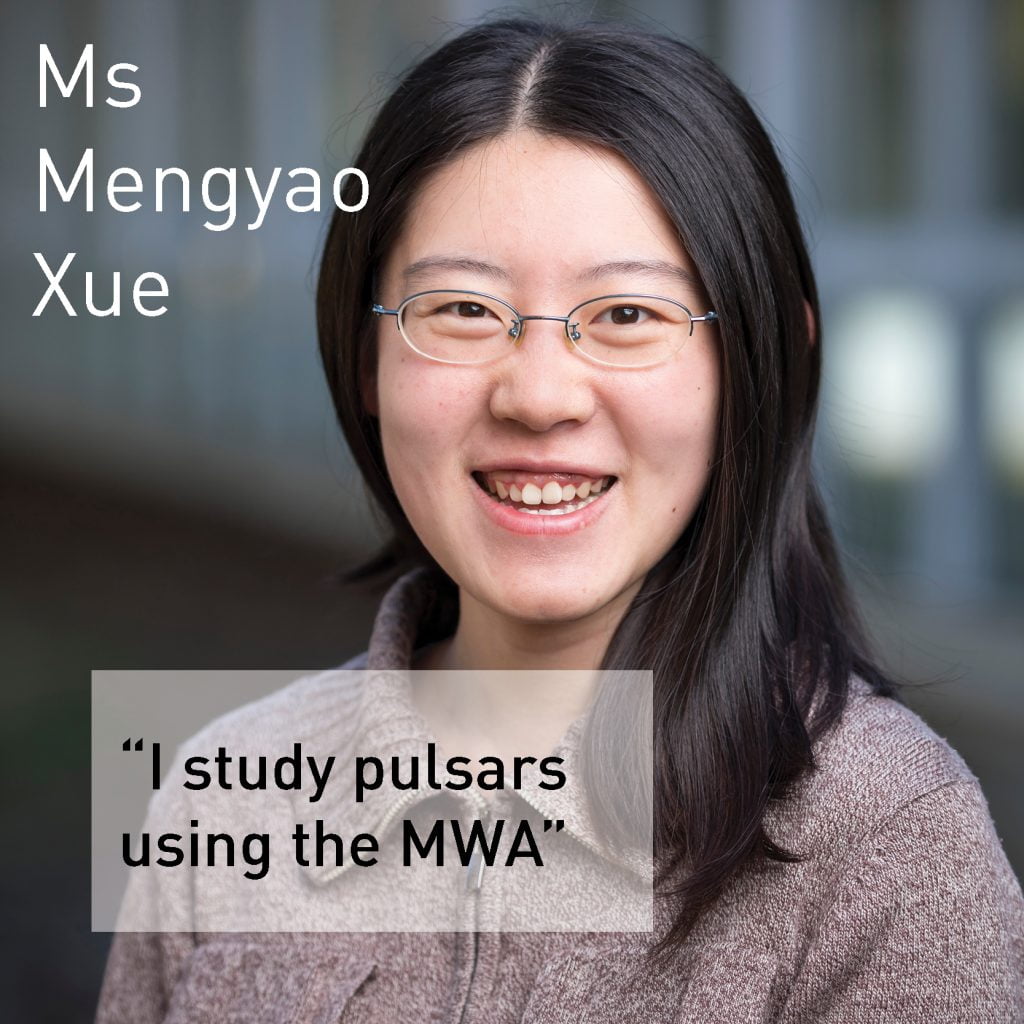“I study pulsars using the Murchison Widefield Array.”
Mengyao Xue uses the Murchison Widefield Array to rediscover pulsars at low frequencies. Pulsars are fast-rotating neutron stars, remnants from a supernova explosion of a large star. They’re incredibly dense – they can have the mass of two of our Suns but are only twenty kilometres across.
“Low-frequency pulsar astronomy is kind of in a renaissance. Now we have large low-frequency arrays, we have very powerful computational facilities and data storage systems, so we can have a chance to have a look at those pulsars and see how they behave at low frequencies.”
Pulsars appear to behave differently at different frequencies, and Ms Xue says that having observational information for pulsars at multiple frequencies is important. Astronomers have discovered more than 2600 pulsars at high frequencies, but updated instruments like the MWA gives everyone a chance to detect those lower frequency emissions.
“At only 10% full sensitivity of the MWA, we’ve already rediscovered 65 known pulsars at low frequencies”
Ms Xue says that she started her studies at ICRAR as she’d like to become an expert in radio astronomy and she wants to contribute to China’s participation in the SKA as well as other collaborations in radio astronomy between Australia and China.
“With the Square Kilometre Array, we’ll be able to detect deep into the galaxy and detect more pulsars.”
